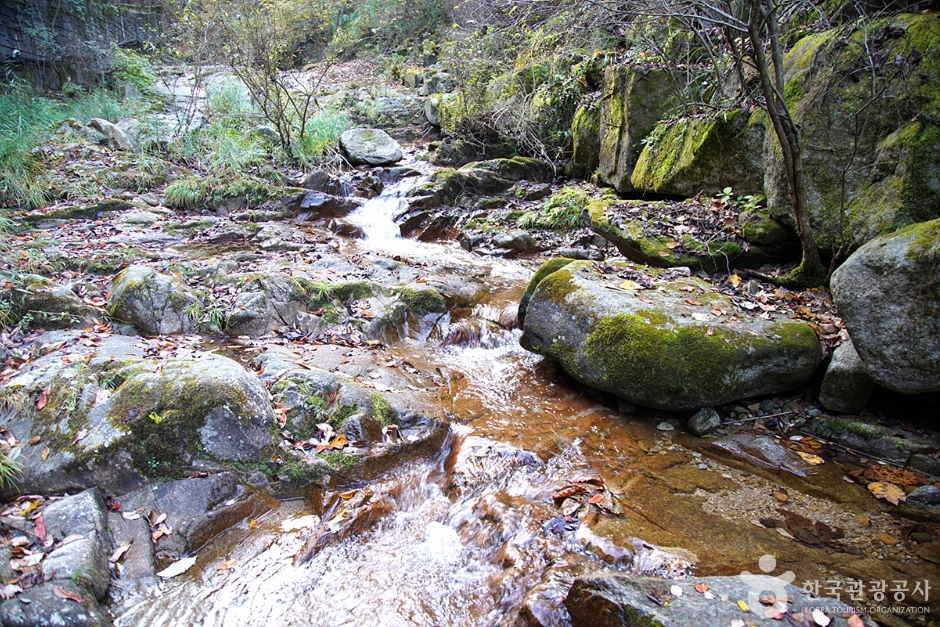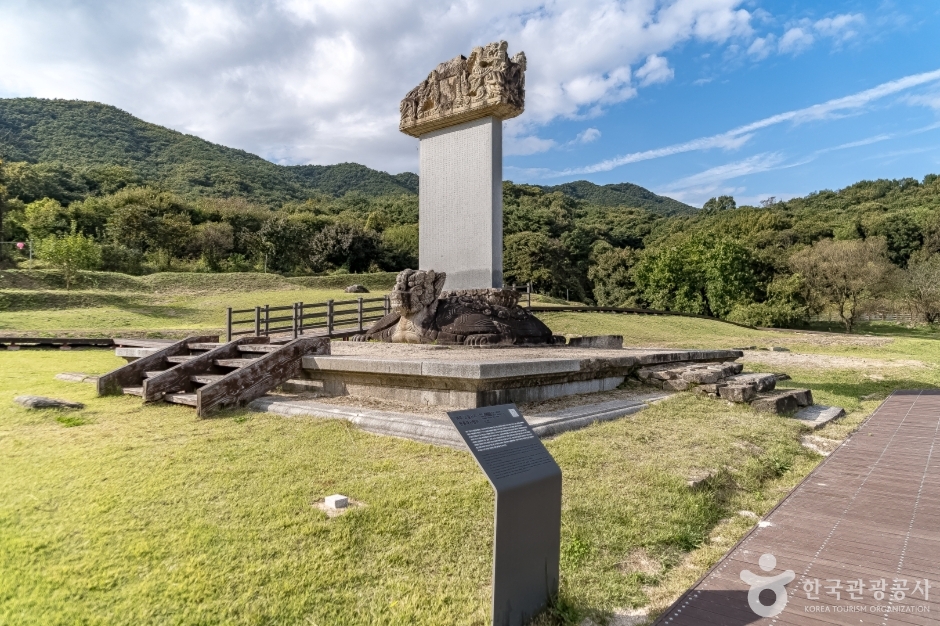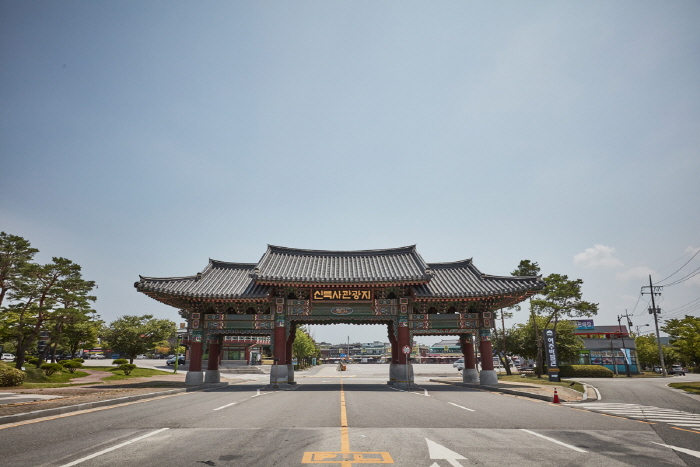Yangpyeong Kudun Closed Station (양평 구 구둔역)
15.3Km 2025-02-02
1336-2 Ilsin-ri, Jipyeong-myeon, Yangpyeong-gun, Gyeonggi-do
This is a simple station that closed in 2012, and the waiting room, the station office, the railroad that stretched out toward one point, and the vehicles that stopped there remain intact. Just standing in front of the door where the name of the history is visible or under the trees that are much taller than the history creates an emotional scene. It is decorated as a cultural space in every corner, so you can look around in detail or just enjoy a walk along the railroad tracks. The Garden of Confession, the ground-breaking floor painting, and the train not running are photo points.
Mok-A Museum(MOKA) (목아박물관)
15.5Km 2022-09-01
21, Imunan-gil, Yeoju-si, Gyeonggi-do
+82-31-885-9952
Mok-A Museum, designated as intangible cultural asset No. 108, was established by Park Chan-su with the purpose of handing down traditional Buddhist art and traditional woodcraft techniques. The four-story museum contains an outdoor sculpture park.
The exhibition displays that remain include Buddhist statues, paintings, and sculptures, as well as the works of director Park Chan-su, including many Buddhist woodcrafts. The outdoor sculpture park displays Buddhist statues such as Mireuksamjondaebul, Birojanabul, Baeuigwaneum, and a three-story pagoda.
Cheoneunsagyegok Valley (Wonju) (천은사계곡(원주))
16.1Km 2025-01-17
Gwirae-ri, Gwirae-myeon, Wonju-si, Gangwon-do
033-737-4579
Cheoneunsagyegok Valley is located at the entrance to the hiking trail to Baegunsan Mountain. The area is adorned with a diverse array of tree species, including pine trees, creating an ideal environment for woodland walks. Stretching for about 500 meters from the entrance to Cheoneunsa Temple, the valley features clear, cool waters and broad rocks, making it a favored destination for summer vacationers.
Yeoju Godalsa Temple Site (여주 고달사지)
16.2Km 2024-08-22
Sanggyo-ri, Bungnae-myeon, Yeoju-si, Gyeonggi-do
Godalsa Temple Site, at the foot of Hyemoksan Mountain, shows the remnants of a temple that was built in AD 764. The temple rose to prominence in the Goryeo period, but was destroyed at some point, although the timing and reason is unknown. While the temple grounds are no longer at their peak of glory, they do still hold a national treasure, four treasures, and one tangible cultural heritage, making it an important site.
Park Hyeonjane Deodeokbap (박현자네더덕밥)
16.4Km 2024-02-23
59 Hoengseong-ro, Hoengseong-eup, Hoengseong-gun, Gangwon-do
033-344-1116
Deodeok, a local specialty of Hoengseong, is known for its slightly bitter taste and crunchy texture, making it a premium and healthy ingredient. This restaurant highlights the Park Hyeonjane deodeok bap set menu (deodeok rice set menu), which features deodeok sundae (sundae stuffed with deodeok), yukhoe (beef tartare), and deodeok bulgogi. Additionally, the menu offers dishes like deodeok bulgogi bibimbap and deodeong makgeolli (deodeok unrefined rice wine). To maintain the warmth of the food, dishes are served on hot iron plates. A typical meal concludes with warm nurungji (scorched rice), which is known to refresh and soothe the palate after the spicy flavors, rounding off the dining experience.
Yeoju Hwangpo Sailboat (여주 황포돛배)
16.8Km 2024-02-23
Cheonsong-dong, Yeoju-si, Gyeonggi-do
The Yeoju Hwangpo Sailboat, historically utilized for transporting goods in the Joseon period and propelled by the wind, has been recreated on the Namhangang River. It operates from the riverside recreation area to Silleuksa Temple, making the round trip seven times daily.
Silleuk Temple Resort (신륵사관광지)
17.2Km 2021-11-05
73, Silleuksa-gil, Yeoju-si, Gyeonggi-do
+82-31-885-2505
The Silleuksa Temple Resort features countless relics and remains, awe-inspiring scenery, the Geumeun Sand Zone, and Silleuksa Temple. Silleuksa Temple is also referred to as the byeokjeol (‘walled temple’ because it has a pagoda made entirely of bricks). The pagoda was erected by the renowned Buddhist monk Wonhyo during the Silla Kingdom, and is visited by many who are drawn to the beautiful natural scenery along the banks of the Namhangang River, which is served by convenient transportation.
Yeoju Silleuksa Temple (신륵사(여주))
17.2Km 2025-06-30
73 Silleuksa-gil, Yeoju-si, Gyeonggi-do
Silleuksa Temple is located along the upper section of the Namhangang River as it flows from Bongmisan Mountain in Yeoju. It is believed that Silleuksa Temple was built by Monk Wonhyo during the reign of Silla King Jinpyeong, but there is no evidence to prove this. The temple is famous for being a place where Naong Hyegeun stopped in 1376. The temple began to be called Boeunsa in 1472, but the name changed back to Silleuksa Temple in 1858.
Yeoju Ogoknaru Festival (여주오곡나루축제)
17.4Km 2025-01-08
Cheonsong-dong, Yeoju-si, Gyeonggi-do
+82-31-881-9692
The Yeoju Ogok Naru Festival celebrates Yeoju’s agricultural products and traditional culture. The festival features a Naru Madang that recreates the market street ambiance around the old traditional quay, an Ogok (five-grain) Madang with various agricultural and specialty products on sale, and traditional activity programs. There is also a food market and a craft market for a festival area.
Yeoju Dojasesang (여주도자세상)
17.5Km 2024-08-29
7 Silleuksa-gil, Yeoju-si, Gyeonggi-do
Yeoju Dojasesang is a multicomplex operated by the Korea Ceramic Foundation that introduces ceramic designs through displays as well as sales in the nation's largest ceramic shopping mall. Another attractive feature of Yeoju Dojasesang is the craft studio, where artisians and visitors alike can create beautiful and unique works.





 English
English
 한국어
한국어 日本語
日本語 中文(简体)
中文(简体) Deutsch
Deutsch Français
Français Español
Español Русский
Русский